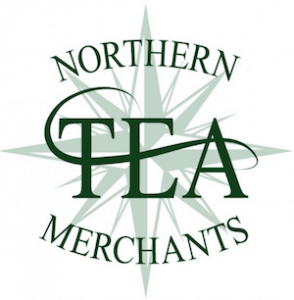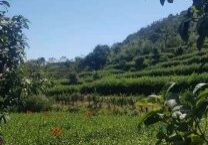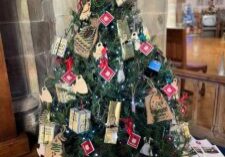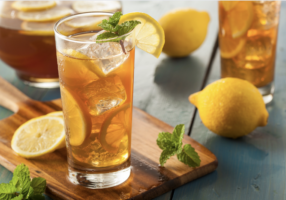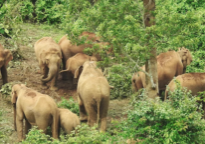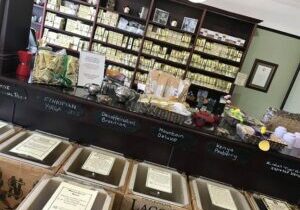One of the delightful things about tea is its quirky traditions.
Tea leaves come in all shapes and sizes, but surprisingly, are all within a set of standards and can be described by using various terms that are exclusive to the Tea Trade.
Some of them are quite simple, and others are really quite lengthy, but this document attempts to explain the general terms in use today when assessing the quality and shape of tea leaves.
Fannings – Small particles of tea leaves a grade higher than dust. Used almost exclusively in tea bags.
Flowery – A large leaf, typically plucked in second of third flush, with an abundance of tips
Golden Flowery – The tea contains very young tips or buds (which are usually golden in colour) that were picked early in the season.
The grades for whole leaf orthodox black tea (in ascending order) are:
OP – Orange Pekoe – Main grade in tea production. Can consist of long wiry leaf without tips.
OP sup – Orange Pekoe Superior – Primarily from Indonesia, tea is much the same as above.
F OP – Flowery Orange Pekoe – High quality tea with a long leaf and few tips, considered second grade
in Assam, Dooars and Bangladesh and first grade in China.
F OP1 – Flowery Orange Pekoe First Grade Leaves – As above but with only the highest quality leaves in the F.O.P classification
GF OP1 – Golden Flowery Orange Pekoe First Grade Leaves – Higher proportion of tip than FOP Top
grade in Milima and Marinyn regions; Uncommon in Assam and Darjeeling.
TGF OP – Tippy Golden Flowery Orange Pekoe – Tea with the highest proportion of tip; Main grade in Darjeeling and Assam.
TGF OP1 – Tippy Golden Flowery Orange Pekoe – As above, but with only the highest quality leave in the T.G.F.O.P classification.
FTGF OP – Finest Tippy Golden Flowery Orange Pekoe – Highest quality grade. Often hand processed and produced at only the best plantations. Roughly one quarter tips. A joke among tea aficionados is that “FTGFOP” stands for “Far Too Good For Ordinary People”.
Broken leaf grades
BT – Broken Tea – Usually a black, open, fleshy leaf, very bulky. Classification used in Sumatra, Sri
Lanka, some parts of Southern India.
BP – Broken Pekoe – Most common broken pekoe grade. From Indonesia. Ceylon, Southern India.
BPS – Broken Pekoe Souchong – Term for broken pekoe in Assam and Darjeeling.
FP – Flowery Pekoe – High quality pekoe. Usually coarser, fleshier broken leaf. from Ceylon and
Southern India, also produced in some parts of Kenya.
BOP – Broken Orange Pekoe – Main broken grade. Prevalent in Ceylon, Southern India, Java and China.
F BOP – Flowery Broken Orange Pekoe – Coarser broken with some tips from Assam, Ceylon, Indonesia, China and Bangladesh. In South America coarser, black broken.
F BOP F – Finest Broken Orange Pekoe Flowery – The finest broken orange pekoe. Higher proportion of tips. Mainly from Ceylon’s “low districts”.
G BOP – Golden Broken Orange Pekoe – Second grade tea, uneven leaves and few tips.
GF BOP1-Golden Flowery Broken Orange Pekoe 1 – As above, but with only the highest quality leaves in the GFBOP classification.
TGF BOP1 – Tippy Golden Flowery Broken Orange Pekoe 1 – High quality leaves with high proportion of tips. Finest broken First Grade Leaves in Darjeeling and some parts of Assam.
Fannings grades
PF – Pekoe Fannings –
OF – Orange Fannings – From Northern India and some parts of Africa and South America.
FOF – Flowery Orange Fannings – Common in Assam, Dooars and Bangladesh. Some leaf sizes come close to the smaller broken grades.
GFOF – Golden Flowery Orange Fannings – Finest grade in Darjeeling for teabag production.
TGFOF – Tippy Golden Flowery Orange Fannings.
BOPF – Broken Orange Pekoe Fannings – Main grade in Ceylon, Indonesia, Southern India, Kenya, Mozambique, Bangladesh and China. Black-leaf tea, few added ingredients, uniform particle size, no tips.
D1 – Dust 1 – From Sri Lanka, Indonesia, China, Africa, South America and Southern India.
PD – Pekoe Dust
PD1 – Pekoe Dust 1 – Mainly produced in India.
